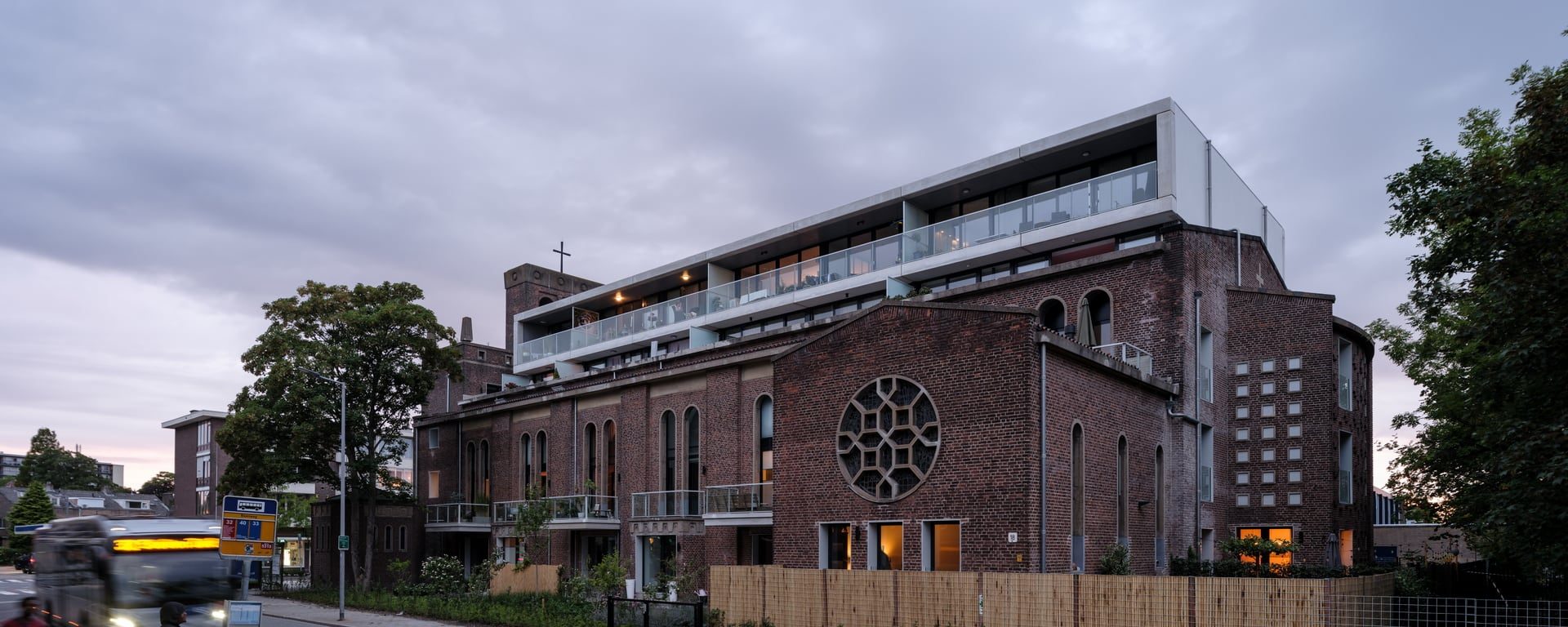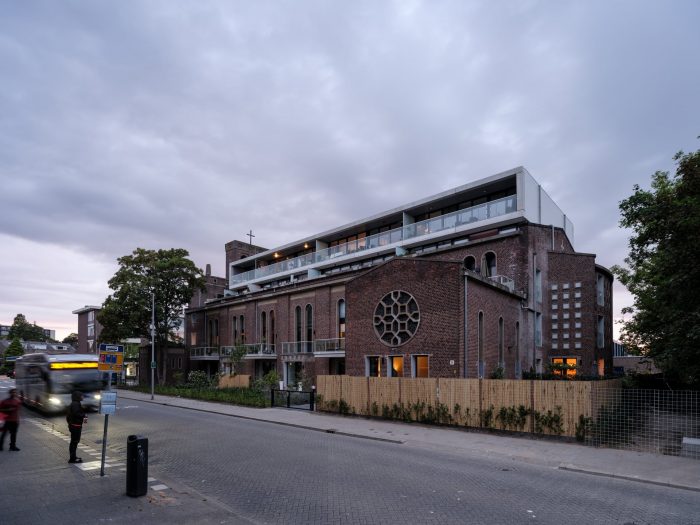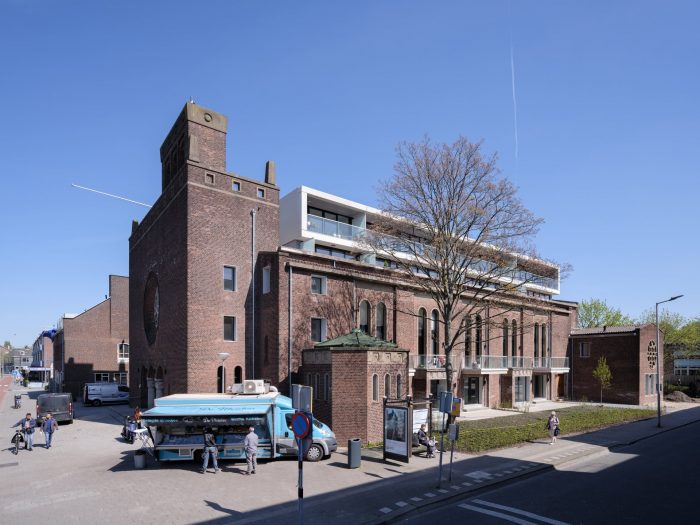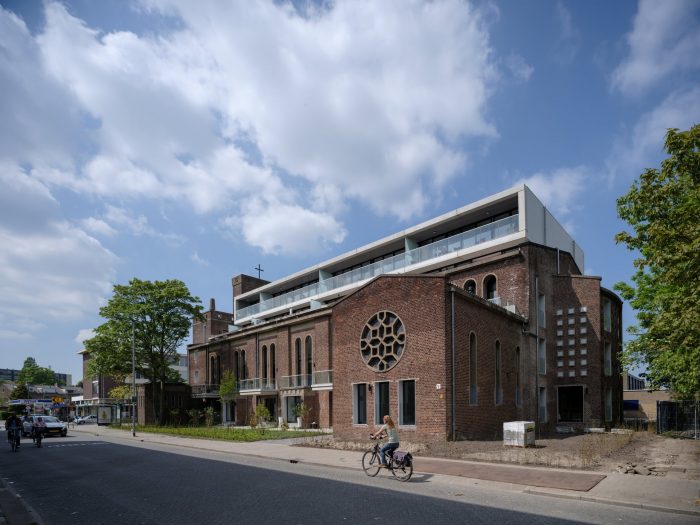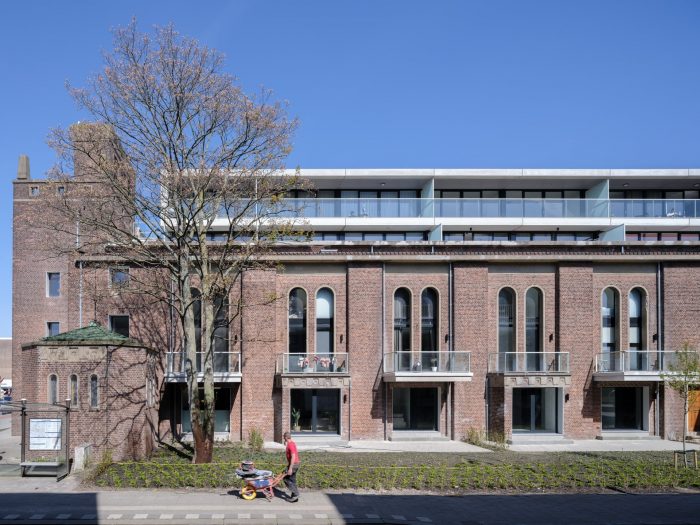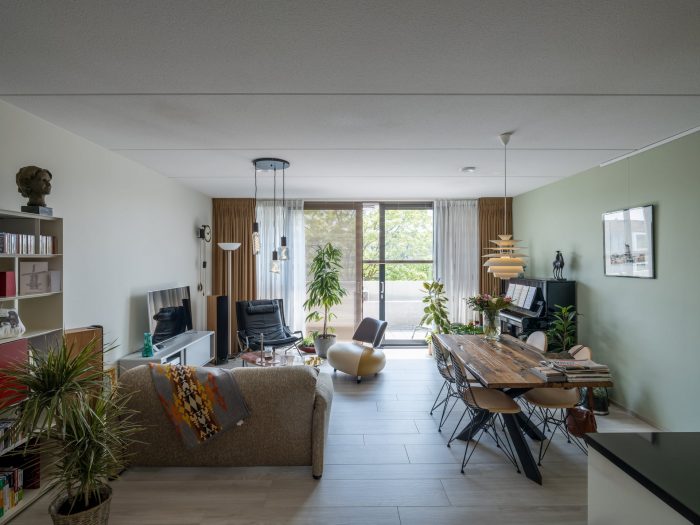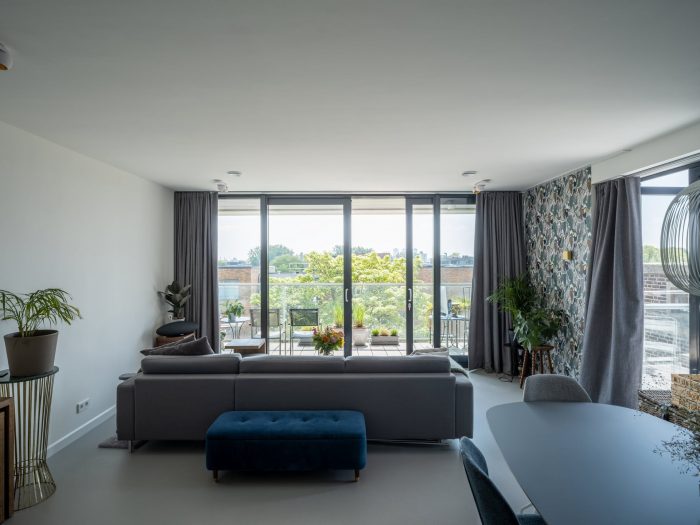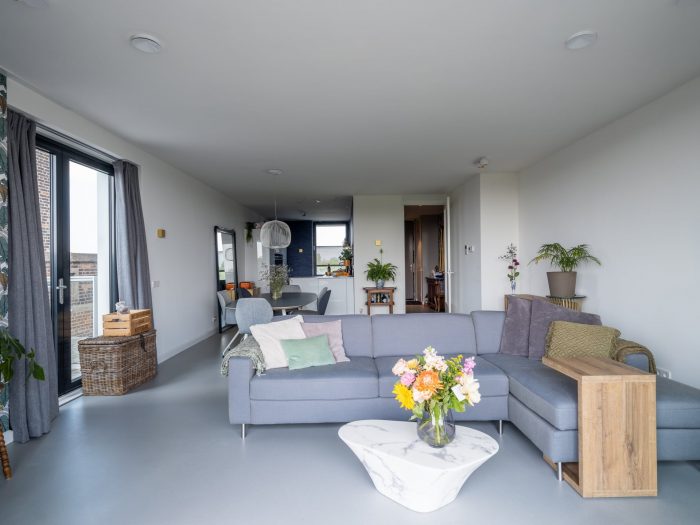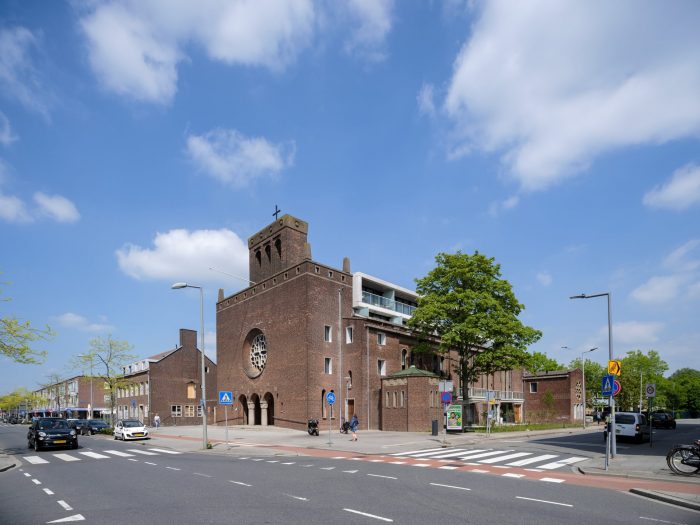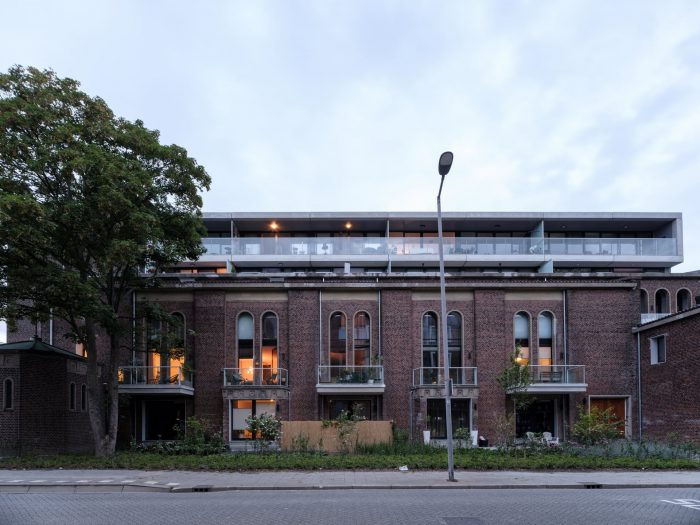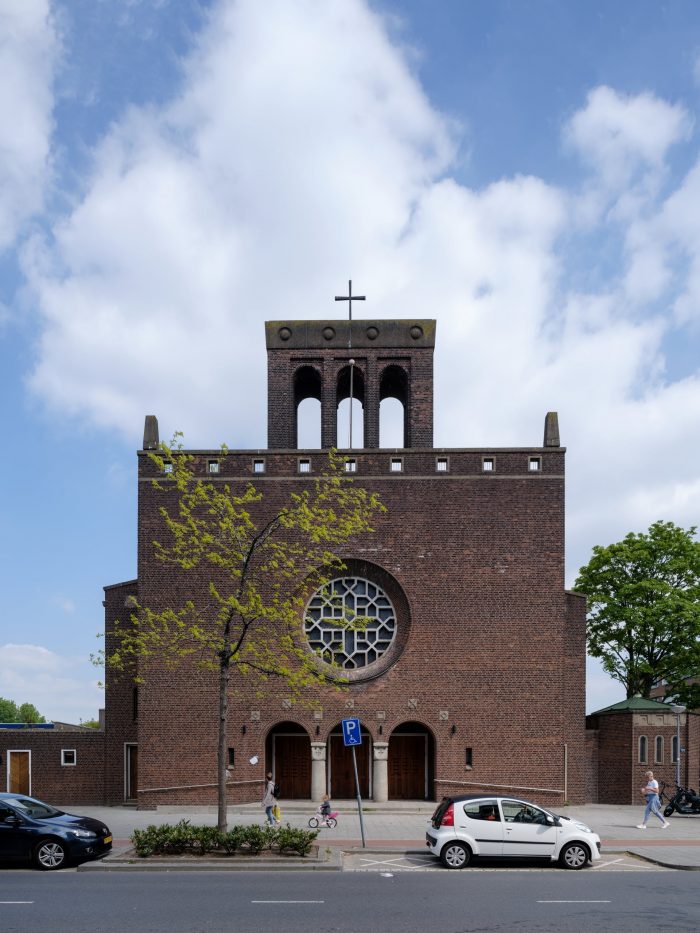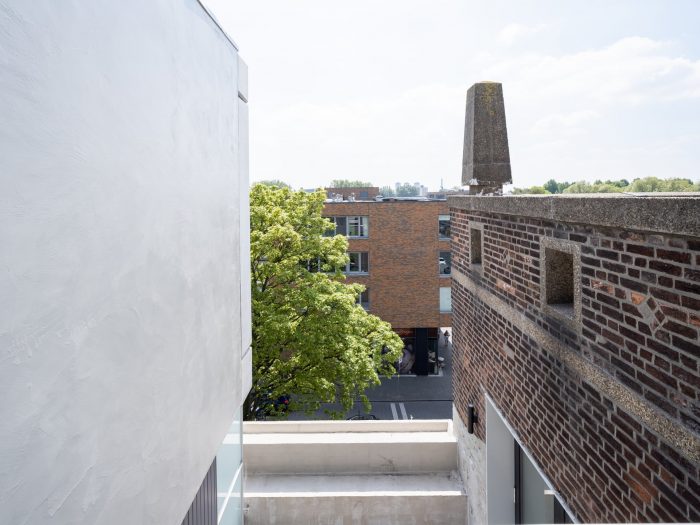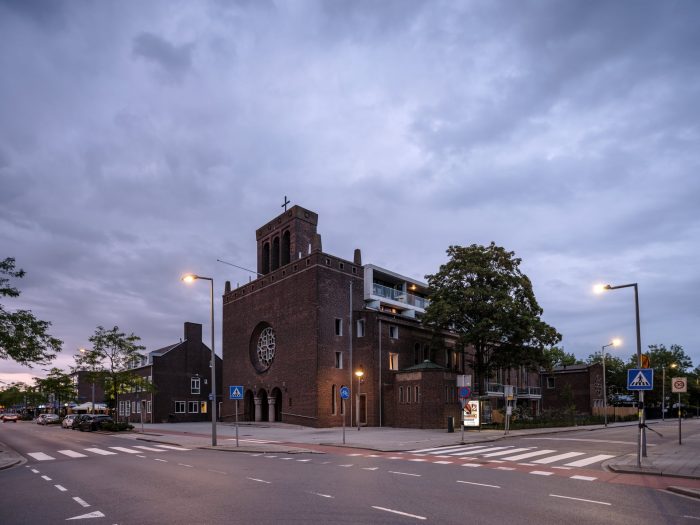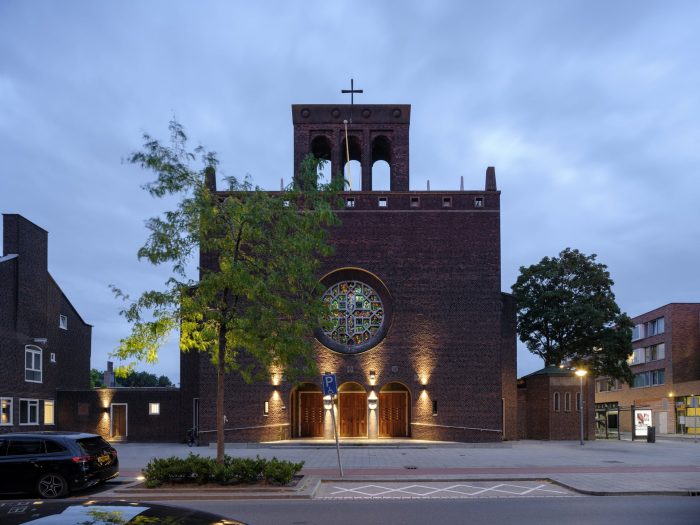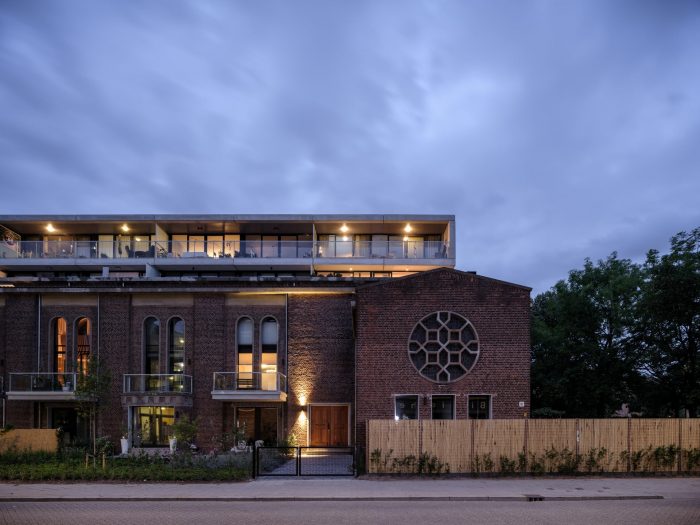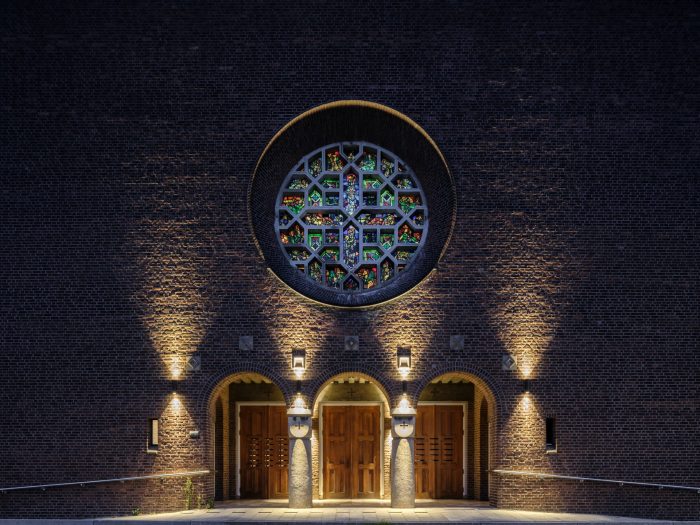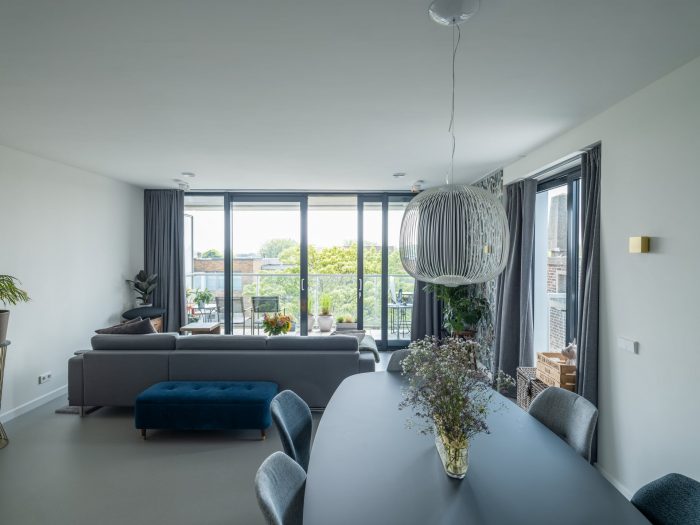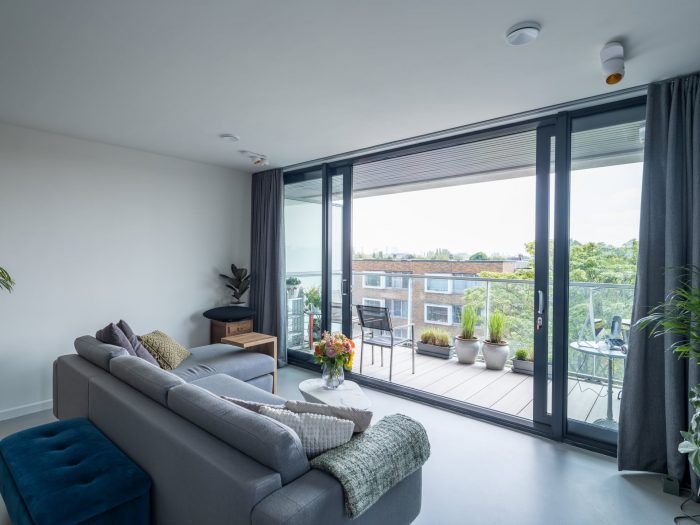鹿特丹的市中心在1940年5月的轰炸中几乎被完全摧毁。二战结束后,在一个被称为 “De Wederopbouw “或 “重建 “的时期,该市试图迅速重建自己。在很短的时间内,鹿特丹以朴素、现代、高效和务实的风格的新建筑重新塑造了自己。
The city center of Rotterdam was almost completely destroyed in the bombing of May 1940. After the second world war, the city tried to rebuild itself quickly during a period called ‘De Wederopbouw’ or ‘The Reconstruction. In a short period of time, Rotterdam reinvented itself with new buildings in an austere, modern, efficient and pragmatic style.
今天,我们在回顾这段战后时期时感到很自豪。这些年轻的战后建筑中有许多被宣布为纪念碑。在其他城市可能被视为普通的五、六十年代的建筑,在鹿特丹却成了纪念碑。当你的整个历史城市中心被摧毁时,你会非常小心地处理剩下的任何建筑。
Today we look back on this post-war period with pride. Many of these young post-war buildings are declared monuments. Buildings which in other cities might be seen as common fifties and sixties buildings are monuments in Rotterdam. When your complete historic city center is destroyed you are very careful with whatever buildings are left.
在这个 “Wederopbouw “时期建造的建筑之一是位于城市北部的Overschie教堂。它建于1953年,只作为教堂使用了约65年。这是由荷兰社会的迅速世俗化造成的。只有46%的荷兰人说他们有宗教信仰。由于该教堂不再用来做礼拜,而是被列入名录的建筑,唯一的选择是将教堂改造成另一种建筑。这种发展在当今的荷兰是很常见的。
One of the buildings built in this ‘Wederopbouw’ period was the Church in Overschie in the northern part of the city. Built in 1953, it only served as a church for about 65 years. This was caused by the rapid secularization of Dutch society. Only 46% of the Dutch say that they are religious. Since the church was not used for worshipping anymore but was a listed building the only option was to transform the church into another kind of building. A development which is quite common nowadays in the Netherlands.
鹿特丹的HOYT建筑师事务所被选为该项目的设计师。设计的难度在于,它必须考虑三个非常不同的利益相关者的利益。主教作为建筑的前主人,希望新的功能不至于太过亵渎,市政府则希望保护其年轻的纪念碑,而开发商则希望有最有效的规划和最好的公寓。HOYT建筑师事务所不想把老建筑打磨掉,但他们也希望能自由地设计最好的房子。
The Rotterdam firm of HOYT Architecten was selected as the designer for the project. The difficulty of the design was that it had to consider the interests of three very different stakeholders. The bishop as the previous owner of the building wanted the new function is not bet too profane, the City was the protection of its young monument and the developer wanted the most efficient plan with the best apartments. HOYT Architecten didn’t want to polish away the old building, but they also wanted the freedom to design the best houses.
在一些草图中,建筑师提议对建筑进行很大的改动,之后他们提出了一个完整保留教堂特征的设计。建筑师决定,目前的教堂也应该在公寓的设计中处于领先地位。这导致除了在屋顶上增加两层外,对外部的干预最小。我们稀疏地增加了新的窗户,窗框隐藏在墙后,他们保留了带有橡木门的主入口。教堂的决定性元素,塔楼、祭坛和中殿都被尽可能地保留了下来。
另外,在内部,老教堂的结构是 “神圣的”。公寓是围绕着中央走廊精心设计的。当你进入教堂时,原来的高度被保留在一个大厅里,可以看到不朽的彩色玻璃窗。这两扇巨大的圆形彩色玻璃窗是主教留下的极少数可以融入设计的宗教物品之一。
After some sketches in which the architect proposed to alter the building very much, they came up with a design that left the character of the church intact. The architects decided that the current church should also be leading in the design of the apartments. This led to minimal interventions on the outside except for two added layers on top of the roof. New windows we added sparsely with frames hidden behind the wall and they kept the main entrance with the oakwood doors. The defining elements of a church, the tower, the altar, and the nave were all kept as much as possible untouched.
Also, on the inside, the structure of the old church was ‘holy’. The apartments were carefully designed around the central corridor. When you enter the church, the original height was kept in a large hall with a view of the monumental stained-glass window. The two enormous round-stained glass windows were among the very few religious items left by the bishop which could be integrated into the design.
建筑师不想把匿名的白盒子设计成公寓,而是尽可能地把文物和老建筑的元素整合到房子里。有一个公寓的厨房里有教堂的巨大保险柜,其他公寓有砖石拱门,有些房子的忏悔室上有一个阳台。塔楼上有一个非常狭窄但很高的公寓,祭坛上方有一个大阁楼。
The architect didn’t want to design anonymous white boxes as apartments but instead whenever possible integrated artifacts and elements of the old building in the house. One apartment has the giant safe of the church in its kitchen, other apartments have masonry arches, and some houses have a balcony on the confessional. There is a very narrow but high apartment in the tower and a large loft above the altar.
为了使这个计划可行,建筑师在教堂的顶部设计了8个额外的公寓。这种有点粗暴的设计与 “Wederopbouw “时期的理性建筑非常吻合。屋顶上的这个元素有自己的新地基,围绕着现有的地基建造。
In order to make the plan feasible, the architect designed 8 extra apartments on top of the church. The somewhat brutalist design fits remarkably well with the rational architecture of the ‘Wederopbouw’ period. This element on the roof has its own new foundation built around the existing foundation.
Architects: HOYT Architecten
Year : 2022
Photographs :Ossip van Duivenbode
Contractor / Builders : Van Wijnen Stolwijk
Structural Engineer Team : CAE Delft
Developer : Ro-ok Rotterdam
City : Rotterdam
Country : The Netherlands

